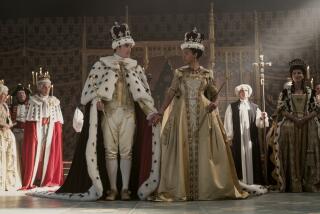An Extraordinary Exchange on All Levels
- Share via
The following comes from a remarkable letter written in June 1940 to Winston Churchill, then leading his embattled nation through some of its darkest hours as it stood alone against Hitler:
“My Darling,
I hope you will forgive me if I tell you something that I feel you ought to know.
One of the men in your entourage (a devoted friend) has . . . told me that there is a danger of your being generally disliked by your colleagues & subordinates because of your . . . overbearing manner . . .
My darling Winston--I must confess that I have noticed a deterioration in your manner; & you are not so kind as you used to be. It is for you to give the Orders & if they are bungled . . . you can sack anyone & everyone--Therefore with this terrific power you must combine urbanity, kindness and if possible Olympic calm. . . . I cannot bear that those who serve the Country & yourself should not love you as well as admire and respect you--Besides you won’t get the best results by irascibility & rudeness. They will breed either dislike or a slave mentality--(Rebellion in War time being out of the question!)
Please forgive your loving devoted & watchful
Clemmie
It is interesting and salutary to be reminded that Churchill’s beloved wife, Clementine, maintained many of her Liberal beliefs long after her husband had left the Liberal Party to join and ultimately lead the Conservatives. Yet, in almost every way that counted, no man could have asked for a more loyal, loving and devoted wife.
Churchill and Clementine Hozier first met in 1904, when he was 29 and she 19. Four years later, they fell in love and married. Their correspondence, spanning the years 1908 to 1964, contains some 1,700 items: letters, telegrams, notes, memoranda. This hefty 702-page volume edited by their youngest daughter, Mary Soames, contains many, but not all of their missives. That publishers were unwilling to issue a two-volume set of the Churchills’ correspondence says something less than flattering about the state of the book business, for these letters are exceptionally valuable on any number of fronts--from the insights they offer into the politics and history of the 20th century to the intimate portrait they provide of a very good, if hardly perfect, marriage.
Some of the most fascinating letters were written during World War I, when Winston, at this point still a Liberal, served as first lord of the admiralty. As the man largely responsible for the disastrous Dardanelles campaign, he was asked to go there in 1915 to assess the damage. The letter he wrote to be sent to his wife in the event of his death epitomizes the essence of his character: “Do not grieve for me too much,” it concludes. “I am a spirit confident of my rights. Death is only an incident, & not the most important wh[ich] happens to us in this state of being. On the whole, especially since I met you, my darling one, I have been happy, & you have taught me how noble a woman’s heart can be. If there is anywhere else I shall be on the lookout for you. Meanwhile look forward, feel free, rejoice in Life, cherish the children, guard my memory. God bless you.”
As Soames points out in her introduction, Winston and Clementine wrote to each other not only when they were apart, but also when they were under the same roof. “My beloved--Get up!” writes Winston in 1908 when the engaged couple were staying as his mother’s house guests. “Let us go for a walk before lunch. . . . The sun shines bright and my heart throbs to see you again . . .” When he was away, their copious correspondence functioned as a lifeline, enabling them to discuss everything from political strategy to family affairs.
Soames thinks that her parents, particularly her mother, could sometimes communicate more successfully on the page than in person. In broaching a difficult subject, like the one in her above-quoted 1940 letter, Clementine could become too riled or overwrought to make her point in person. By organizing her thoughts on paper, however, she was able to present a calm, well-reasoned, tactfully phrased argument, which often bore the desired results.
Soames has done a splendid job of supplying the reader with almost everything needed to follow the story that these letters tell: Headnotes to each chapter set the stage, footnotes explain the references, and a family tree, photographs and maps help complete the picture. Candid, expressive, shrewdly perceptive and vividly descriptive, these letters offer a revealing glimpse of the private faces of two celebrated public persons.
More to Read
Sign up for our Book Club newsletter
Get the latest news, events and more from the Los Angeles Times Book Club, and help us get L.A. reading and talking.
You may occasionally receive promotional content from the Los Angeles Times.










